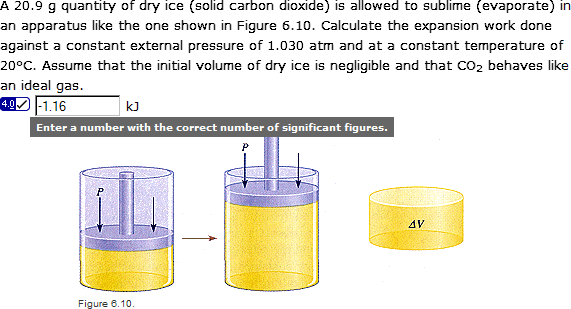
If enabled by your instructor, an answer format tip is displayed below the answer box when it is selected and provides information about the form of the answer that is expected. The answer format tip indicates that a number is expected and might also specify whether significant figures or units will be checked.
If your instructor has enabled it, the sigfig icon  is displayed beside the answer box for questions that
check for significant figures.
is displayed beside the answer box for questions that
check for significant figures.
Type your answer using the indicated notation.
Not all questions accept all kinds of notation. The kind of answer that is expected should be clear from the question.
| Notation | Examples |
|---|---|
| A decimal number | 35 -2.8 1,000,000.89 |
| A fraction or ratio | 3/7 |
Scientific (e) notation |
-3.045e2 |
| A number and unit | 76.5 cm 20 m/s |
| An exponent (for example, 4.32) | 4.3**2 |
| A simple arithmetic expression | 5+(6/7) |
Decimal notation follows U.S. convention, with the period (.) as decimal point and commas (,) optionally used to separate of groups of three digits left of the decimal point.
When entering scientific notation, always use a lowercase e and an integer exponent, for example, 1.23e-5.
Equivalent units can be specified. For example, 1 mi, 5280 feet, and 1760 yards are considered to be the same.
By default, numerical questions require the answer to be within 2% of the correct value. Particular questions, classes, or instructors might require greater accuracy, and will usually inform you if that is the case.